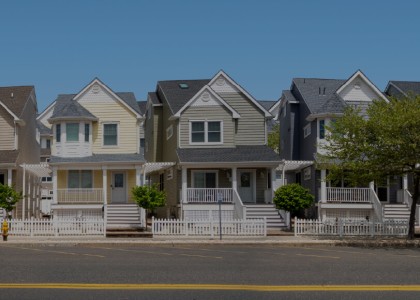On average, rural residents spend 40% more than their metropolitan counterparts on their energy bills, relative to income. Energy efficiency can help lessen these costs, often by making customers’ homes more energy efficient. Because rural residents can be more difficult and expensive to reach than their urban counterparts, utilities and statewide efficiency program administrators can easily overlook them. New research from ACEEE demonstrates that several states across different climates and political environments are using effective policy tools to drive rural energy and utility bill savings.
Register for the webinar today at 1pm ET.
Chester, Vermont: Efficiency Vermont helped Lynn and Buddy Behrendt add insulation to their attic and knee walls, spray foam their basement walls, and air-seal throughout their home.
Use Geographic Equity as a Metric of Success
State regulators can set performance metrics and incentivize program implementers to deliver efficiency programs directly to rural customers. Utility performance incentives are already a common policy tool for overall efficiency performance, and most of the largest U.S. electric utilities are in states with policies that establish such incentives.
Some public utility commissions (PUCs) offer utility performance incentives for meeting energy efficiency program goals; they can go a step further by incorporating a geographic equity metric. PUCs in Vermont and Oregon have used these metrics for their statewide efficiency program administrators, Efficiency Vermont and Energy Trust of Oregon.
Cave Junction, Oregon: Energy Trust of Oregon helped Kelpie Wilson and George Shook design and build a home with a high-performance heat pump and windows, heat recovery ventilation system, and rooftop solar.
Design Energy Efficiency Targets to Help Munis and Co-Ops Succeed
Energy efficiency resource standards (EERS) encourage near- and long-term savings from utilities. On average, states with an EERS policy achieve efficiency savings and spending levels that are more than three times higher than states without an EERS. State regulators and policymakers should establish energy savings targets for munis and co-ops, while allowing flexibility in how they meet those targets.
Michigan and Minnesota, for example, include munis and co-ops in their energy savings targets and allow them to either operate their own efficiency programs or work collaboratively with umbrella organizations to administer programs and report on progress. This flexibility can help minimize the administrative burden on smaller utilities trying to comply with efficiency targets, while still requiring them to report regularly on their progress.
Untapped Opportunity for Rural Energy Efficiency
State leaders are increasingly recognizing the importance of serving their rural constituents, who stand to benefit from the comfortable homes, lower bills, and other advantages of energy efficiency. Some states are leveraging this potential, but countless untapped opportunities remain. By implementing the energy efficiency policies highlighted in ACEEE’s new report, state leaders will help advance an equitable clean energy economy.
To learn from state leaders on rural energy efficiency, join us during our upcoming webinar. Would your community benefit from ACEEE’s expertise on this topic? Please let us know.





